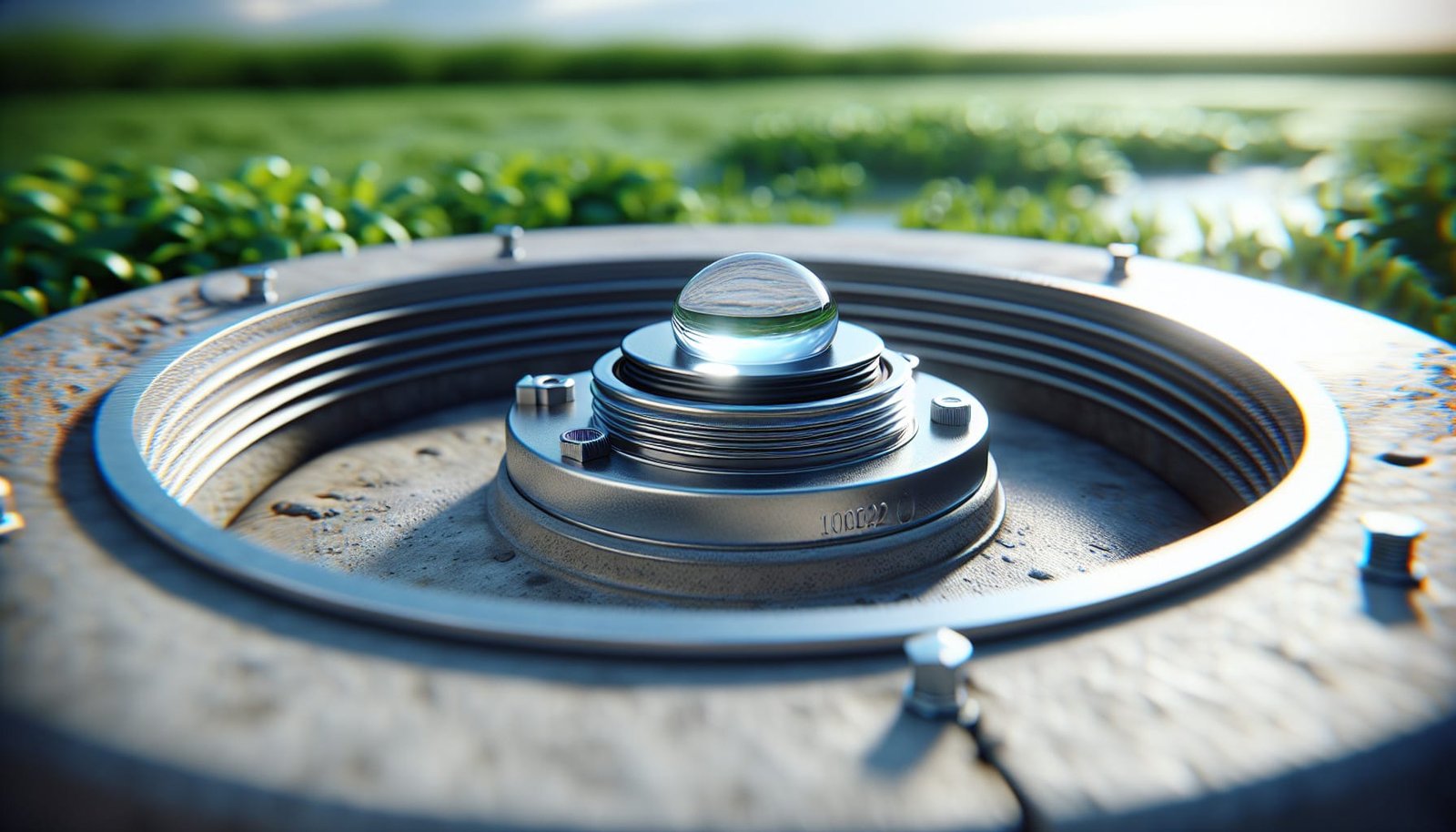Are you noticing green slime, staining, or musty odors in your well water or storage tank?

What is algae and why does it grow in well systems?
Algae are simple photosynthetic organisms that thrive where light, nutrients, and water meet. In well systems, algae most commonly develop in storage tanks, cisterns, pressure tanks with air gaps, spring boxes, or any surface water components that receive light. Although many algae species are benign, their growth can clog filters and plumbing, cause tastes and odors, and create conditions that favor harmful bacteria.
Recognizing algae early helps you prevent damage and maintain safe, clear water. You’ll want to know the contributing factors so you can take effective action.
Common signs of algae growth in a well system
You’ll notice visible green, blue-green, or brown slimy coatings on tank walls, plumbing, or screens. Water discoloration, musty smells, and rapid filter fouling are common. Algae can also leave stains on fixtures or laundry and cause intermittent pump issues when it clogs intake screens.
Watch for these signs and act quickly—early remediation is easier than handling an advanced infestation.
What causes algae growth in your well system?
Algae need three main things: light, nutrients, and stagnation. If any part of your system provides these conditions, algae can establish.
- Light: Transparent or translucent tank materials, uncovered cisterns, or poorly shaded spring boxes let sunlight reach water and support algae photosynthesis.
- Nutrients: Organic material, agricultural runoff (fertilizers), high levels of phosphorus or nitrogen, or decaying leaves and insects provide food for algae.
- Warmth and stagnation: Warm temperatures and low circulation permit growth, especially in surface or near-surface storage.
- Poor sealing or damaged wellhead: A cap that isn’t sealed or screened properly allows contaminated surface water, debris, and sunlight in.
You’ll have a much lower risk after you remove or control these contributing factors.
How does algae affect water quality and your system?
Algae can damage your system and water quality in several ways:
- Clogs: Algae can obstruct screens, filters, and pipes, reducing flow and stressing pumps.
- Taste and odor: Some algae produce musty or earthy flavors and unpleasant smells.
- Staining: Surfaces and laundry can take on stains from pigments and organic byproducts.
- Protective niche for microbes: Algal mats can shelter bacteria, protozoa, and other microorganisms that may pose health risks.
- Increased maintenance and costs: Frequent cleaning, filter replacement, and possible system repairs increase expense and downtime.
Understanding these impacts will help you prioritize prevention and maintenance.
Inspecting your well system: what to look for
A systematic inspection helps you identify vulnerabilities and catch algae early.
- Wellhead and cap: Check for cracks, missing caps, and gaps where light or surface runoff could enter.
- Storage tank material: Look for transparent plastics or sunlight entering vents and access points.
- Tank interior: If safe and accessible, inspect tank walls for green or brown biofilms.
- Screens and intakes: Monitor fine mesh screens on pumps and vents for slime buildup.
- Surroundings: Inspect gutters, drainage, nearby landscaping, and fertilizer sources that may deliver nutrients into the area.
Perform inspections seasonally and after heavy storms or maintenance work.

Preventive measures you can take right now
Prevention focuses on reducing light, removing nutrient sources, and maintaining circulation and cleanliness.
- Shade and block light: Use opaque or painted tanks, cover any translucent surfaces, and cap any exposed detention basins.
- Seal the wellhead: Fit a sanitary well cap and ensure vents are screened to block insects and debris while allowing air exchange.
- Maintain positive drainage: Grade soil away from the well and tank to prevent runoff carrying organics or fertilizers into the well area.
- Keep vegetation trimmed: Prevent leaf and organic material buildup near the well or cistern.
- Use tighter filtration and pre-filters: A good sediment and carbon filter will reduce particulates and some nutrients before they reach storage.
- Increase circulation: Install recirculation pumps or mixers in larger tanks to prevent stagnation.
- Regularly clean and disinfect storage tanks: Schedule professional cleaning annually or as needed.
You’ll reduce the chance algae establishes if you remove its basic needs.
Table: Quick preventive checklist
| Area | Action | Frequency |
|---|---|---|
| Wellhead/cap | Inspect & replace worn cap; ensure screened vents | Every 6 months |
| Storage tank | Ensure opaque material or paint exterior; seal access hatches | One-time upgrade; inspect annually |
| Drainage | Grade soil away, divert roof/runoff | One-time setup; inspect after storms |
| Vegetation | Trim plants and remove debris around well | Every 2–3 months |
| Filtration | Install/replace sediment prefilter | Replace filter cartridges as needed (monthly–quarterly) |
| Circulation | Add tank mixer or recirculation loop | Install as needed; inspect annually |
| Cleaning | Clean/disinfect tanks and screens | Annually or when algae observed |
Cleaning and disinfection: what you can do safely
If you find algae, you’ll want to clean and disinfect the affected components. For safety and effectiveness, follow established procedures or hire a licensed well contractor.
- Drain and scrub: For accessible storage tanks, drain the tank and scrub interior walls with a long-handled brush to remove biofilms and sediment. Rinse thoroughly.
- Shock chlorination: Many homeowners use shock chlorination to disinfect wells and tanks. This involves adding a concentrated chlorine solution to achieve a specific free chlorine concentration throughout the static water column, circulating it, and allowing a contact time (usually several hours to overnight).
- Flush until residual chlorine is safe: After disinfecting, flush the system until chlorine levels drop to acceptable limits (usually less than 1 mg/L or local guideline). Test before using water for drinking.
Safety notes: Use appropriate personal protective equipment (gloves, eye protection), follow product directions, and never mix chlorine with acids or ammonia. If you’re unsure, hire a qualified professional.
How shock chlorination works (overview)
Shock chlorination kills algae, bacteria, and many microorganisms by exposing the treated water and surfaces to a high free chlorine concentration for a sustained period. You’ll do this by:
- Estimating the system’s water volume (well casing water + storage tank).
- Choosing a chlorine source (household bleach or granular calcium hypochlorite).
- Calculating the amount needed to reach the target free chlorine concentration.
- Introducing and circulating the chlorine solution through well casing, pump, and storage.
- Letting it sit (commonly 8–24 hours).
- Flushing the system until chlorine residual is safe.
You’ll have better results when you physically remove sediment and biofilm before chlorination.

Calculating chlorine for shock chlorination (practical method)
You’ll want to calculate the bleach amount carefully. The approach below uses household bleach at about 5.25% available chlorine (common in many household bleaches). Confirm the label concentration—some bleaches are stronger.
Formula (conceptual):
- mL of bleach required = target_ppm × total_volume_gallons × 0.0721
- 0.0721 converts ppm × gallons into milliliters for 5.25% bleach.
Example target ranges:
- 50 ppm — light disinfection/maintenance
- 200 ppm — common shock chlorination concentration for wells (used by many health departments) Always check local guidance and safety requirements before choosing a target.
Table: Approximate bleach amounts for common system sizes (5.25% bleach)
Note: These values are estimates. Confirm bleach strength, measure your total water volume precisely, and consult your local health department if you’re unsure.
| System volume (gallons) | Bleach for 50 ppm (mL) | Bleach for 50 ppm (cups) | Bleach for 200 ppm (mL) | Bleach for 200 ppm (gallons) |
|---|---|---|---|---|
| 500 | 1,803 mL | 7.6 cups | 7,212 mL | 1.90 gal |
| 1,000 | 3,605 mL | 15.3 cups | 14,420 mL | 3.81 gal |
| 2,000 | 7,210 mL | 30.6 cups | 28,840 mL | 7.62 gal |
| 5,000 | 18,051 mL | 76.4 cups | 72,205 mL | 19.08 gal |
How to use these numbers:
- Estimate the water volume between the pump intake, well casing, and storage tank.
- Choose a target (e.g., 200 ppm for shock).
- Add bleach to the wellhead or tank. Circulate by running faucets until the chlorinated water reaches all outlets.
- Keep faucets open to vent chlorine gas when appropriate and follow safety guidance.
- Let sit 8–24 hours, then flush until chlorine levels drop to acceptable levels (<1 mg />, or per local guidelines).
Important caution: These are large quantities of bleach for bigger systems. If you have a very large tank or a deep well, it may be safer and more efficient to hire a licensed well contractor who can handle solids and residuals properly.
Alternative disinfectants and treatments
You may consider these options depending on availability, safety, and your system’s specifics:
- Calcium hypochlorite (HTH): Solid form with higher chlorine content; used when large chlorine doses are required. It must be dissolved carefully and handled with extreme caution.
- Hydrogen peroxide (3% or higher food-grade): Used in some systems as an oxidizer; may help with biofilm but is less commonly used for broad shock treatment than chlorine.
- Copper-silver ionization: A professional treatment that can reduce microbial growth in storage systems; requires installation and monitoring and may be regulated for potable water.
- Ultraviolet (UV) sterilization: Effective at killing microorganisms in flowing water but does not remove nutrients or prevent algae in storage tanks. Use as part of a multi-barrier strategy.
- Ozone: Strong oxidizer used by some municipal or private systems; requires equipment and safety controls.
You’ll want to weigh costs, operational complexity, and potential effects on water chemistry and plumbing materials before choosing an alternative.

When to call a professional
Call a licensed well contractor or certified water system technician if you experience:
- Persistent or recurrent algae after preventive measures.
- Unclear contamination source or if surface water may be entering the well.
- Difficult-to-clean tanks, damaged casings, or suspected structural issues.
- Concern about safety in handling large chlorine quantities or chemical treatments.
Professionals can perform thorough cleaning, professional shock treatments, water quality testing, and any needed repairs.
Testing and monitoring: what you should measure
Regular water tests help you monitor problems and confirm treatments were effective.
Essential tests:
- Total coliform and E. coli: Indicates microbial contamination.
- Heterotrophic plate count (HPC): Shows general microbial load.
- Chlorine residual: To confirm adequate disinfection during treatment and safe levels after flushing.
- pH, iron, manganese: These can affect aesthetics and provide conditions that favor algae or biofilms.
- Nutrients (where available): Phosphate and nitrate tests can show nutrient sources feeding algal growth.
- Visual inspection for chlorophyll-like pigments.
Test frequency:
- Baseline annual testing for private wells.
- After any shock disinfection or visible algal event.
- More frequently if you have a history of contamination or persistent problems.
Local health departments and certified labs can advise on proper sampling procedures and interpretation.

Long-term design solutions to prevent algae
If algae is a recurring problem, consider design or equipment upgrades:
- Replace translucent tanks with opaque materials or paint them with non-toxic protective coatings.
- Install properly vented, screened well caps and sealed access hatches.
- Add a tank mixer or recirculation system to reduce stagnation.
- Re-locate storage or cover open spring boxes and cisterns with secure, light-tight lids.
- Consider pretreatment for surface water inputs: use settling tanks, sand or media filters, and prechlorination before storage.
These steps reduce long-term maintenance and improve system reliability.
Safety and environmental considerations
Safety is critical when using chemicals and performing maintenance.
- Personal safety: Use gloves, eye protection, and adequate ventilation when handling chlorine or strong oxidizers.
- Chemical mixing: Never mix chlorine with acids, ammonia, or other cleaners—dangerous gases can form.
- Wastewater disposal: Avoid dumping highly chlorinated water into septic systems, sensitive waterways, or areas with plants, animals, or humans until chlorine is neutralized or sufficiently dilute.
- Local rules: Check local regulations for permissible discharge methods and limits. Some areas require notification or professional handling for large disinfectant volumes.
- Storage and transport: Keep chemicals in original containers, away from heat and children, and follow label storage guidance.
You’ll protect yourself and the environment by following these precautions.
Troubleshooting persistent algae problems
If algae keeps returning, work through this checklist:
- Reassess light exposure. Is any sunlight reaching the water or tank interior?
- Reduce nutrient inputs. Look upstream—yard runoff, fertilizer application, septic issues, or animal access can feed algae.
- Check for leaks or cross-connections allowing surface water into the well casing.
- Improve circulation. Passive systems often need mechanical mixing.
- Consider alum or flocculants for stubborn suspended organics (professional application).
- Test for iron and manganese—these can color water and support certain organisms.
- Evaluate whether a professional remediation, including tank replacement, is justified.
Persistent issues often involve a combination of causes—address as many variables as possible.
Routine maintenance schedule you can follow
Staying on schedule keeps algae from becoming an expensive problem.
- Weekly–monthly: Visual check of wellhead area, gutters, and tank exterior; clean immediate debris.
- Quarterly: Check vents and screens; clean prefilters and sediment traps.
- Annually: Full tank inspection, clean and disinfect storage tanks as needed; comprehensive water testing.
- After storms or floods: Inspect wellhead and tank, test for contamination, consider disinfection.
A written log helps you track dates, findings, and any treatments so you can identify trends.
Frequently asked questions (short answers)
Q: Is algae in my storage tank dangerous to drink? A: Algae itself is often not highly toxic, but its presence indicates conditions that can support harmful microbes. Test for coliform bacteria and have professionals assess if you have health concerns.
Q: Can I just paint my tank to stop algae? A: Yes—painting an opaque tank exterior or replacing translucent tanks reduces light and can significantly lower algae growth. Use non-toxic coatings recommended for potable water tanks.
Q: How often should I shock chlorinate? A: For routine maintenance, many people disinfect annually or after contamination events. Use shock chlorination when you find algae or after any well repair or flood.
Q: Will a UV system stop algae? A: UV kills microorganisms in flow but won’t prevent algae in a storage tank that gets light and nutrients. Combine UV with shading and filtration for best results.
Q: Are algaecides safe in drinking water? A: Most algaecides aren’t formulated for potable water and can pose health risks. Don’t use them unless labeled safe for drinking water systems and used according to regulations and manufacturer instructions.
Summary: practical action steps you can take today
- Inspect your wellhead and storage for light leaks, debris, and damaged caps. Seal or replace as needed.
- Shade or replace translucent storage tanks and ensure vents are screened.
- Remove organic debris, maintain positive drainage, and keep fertilizers away from the well area.
- Clean visible slime manually and consider shock chlorination when algae is present—calculate doses carefully using the method described above and follow safety protocols.
- Test water (bacteria, chlorine residual, nutrients) before and after treatment.
- Consider installing a mixer, improved filtration, or professional remediation for persistent issues.
- Keep a maintenance log and schedule regular inspections and annual professional checks if needed.
You’ll reduce algae risk and improve water quality by combining preventative design, good housekeeping, proper disinfection, and periodic testing.
Final advice: balancing DIY and professional help
You can handle many prevention and basic disinfection tasks yourself, but large-scale contamination, structural failures, or recurring problems are best handled by licensed professionals. When in doubt—especially with water used for drinking—reach out to your local health department or a certified well contractor. They’ll help you diagnose the source, recommend safe, regulatory-compliant treatments, and keep your well system functioning reliably.
